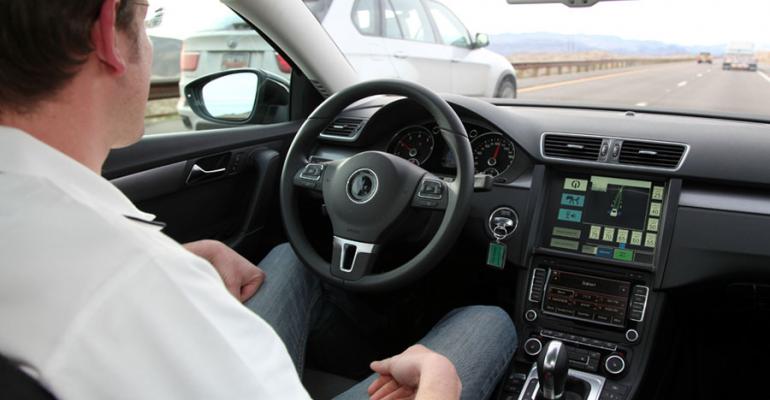With his hands off the steering wheel and feet clear of the control pedals, Ibro Muharemovic sits in the driver’s seat of a car as it negotiates stop-and-go traffic on Las Vegas Blvd.
He assumes the same passive position as the specially equipped car drives itself down a Nevada highway. During a 10,000-mile (16,000-km) test drive, the car is on its own nearly 65% of the time.
“I sat behind the wheel with my hands on my knees,” Muharemovic, lead engineer for auto supplier Continental’s advanced-engineering unit, tells WardsAuto of the cross-country testing he recently performed with two colleagues.
“We didn’t have to worry about or focus on construction zones, curves or anything like that for 6,400 miles (10,240 km),” he says.
If the age of completely automated vehicles is not yet here, it is getting closer.
“This highly automated car shows what is possible,” says Christian Schumacher, Continental’s chief of systems and technology. “We still have a way to go, but it is amazing what we can do now.”
The demonstration car is a Volkswagen Passat retrofitted with advanced technology including a brake controller, long- and short-range radar, a stereo camera and electronic power steering.
“Since it is Continental technology, the vehicle could be any production vehicle,” says spokesman Neil DeVries. The supplier currently has no auto maker customer or partner for the advanced-technology product.
If another car enters the sensors’ field of view, the test vehicle’s camera captures details of the immediate surroundings. Then, the vehicle either brakes to adapt to traffic flow or steers away from a potentially hazardous situation.
The vehicle can readily cruise down a freeway or negotiate rush-hour traffic. Twisty roadways and the like are trickier. Work remains to be done there.
In situations that exceeded the capabilities of the test car, such as where road markings cannot be detected or bends are too tight, the system switches itself off and the driver resumes control of the vehicle. If a driver fails to react, the vehicle gradually comes to a stop.
The Continental self-driving car is not a first. Google has commissioned the building of a self-driving car that is “amazing from a sensing perspective, but is very expensive,” Schumacher says.
The equipment in Continental’s vehicle consists not of customized sensors and tailor-made actuators, but technology that is or soon will be in production.
“Using off-the-shelf components helps to provide a system that is cost-effective and readily available,” Muharemovic says. “Designing a system with all-new components from the ground up would take far more time and increase the costs tremendously.
“We are now in an early advanced-engineering stage, proving that the concept will work.”
The Germany-based supplier says its semiautonomous system is designed to keep a driver active behind the wheel, unlike a completely autonomous vehicle where the “driver” could sit elsewhere.
“We consider it a driver-assist technology,” Muharemovic says. “The system can assist in heavily congested traffic situations or even out on the open road, lessening driver fatigue while relying on Continental’s sensors, actuators and sensor-fusion technology.”




